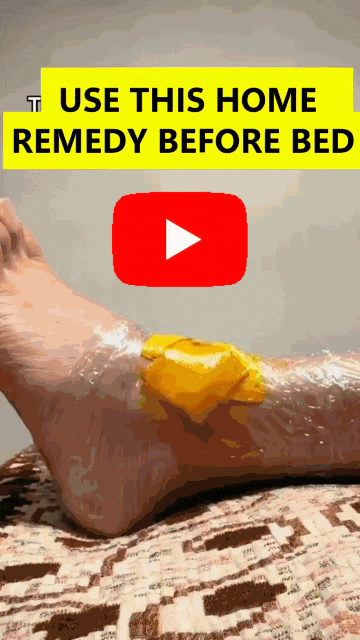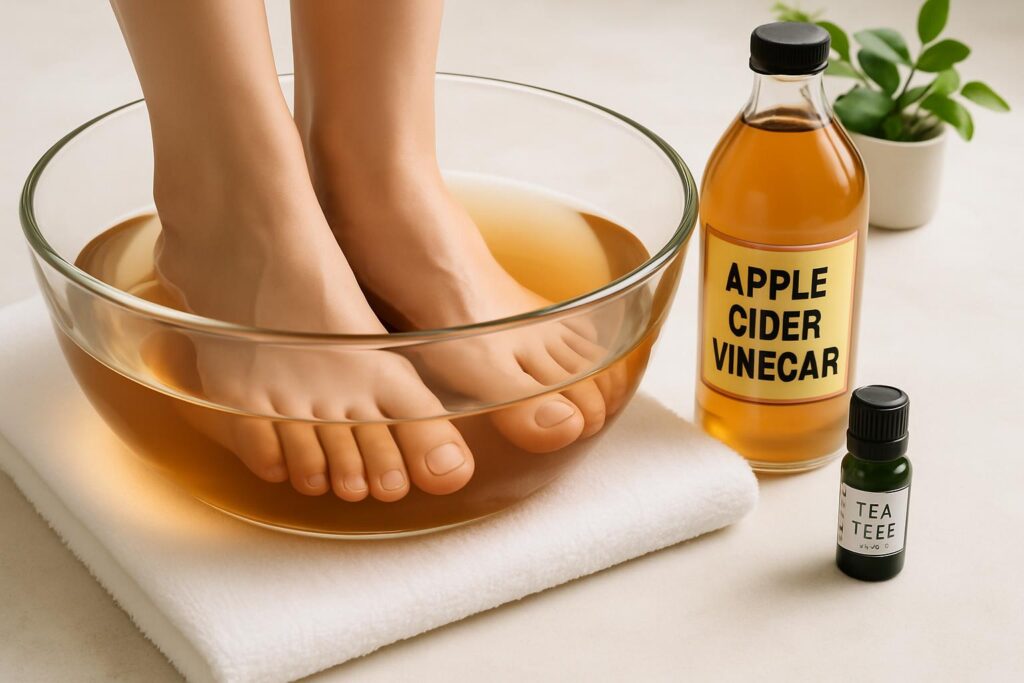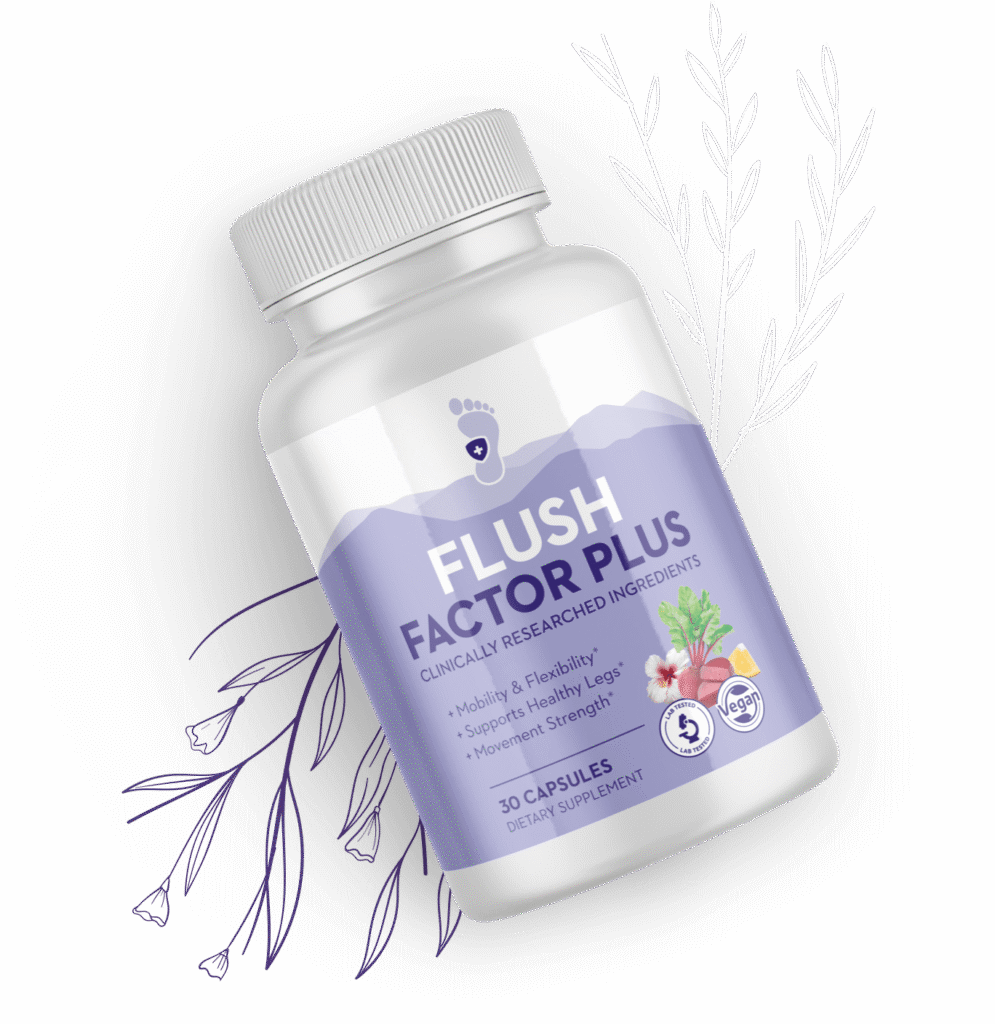How to Reduce Swelling in Your Feet: The Ultimate Guide for Women Over 40
If you’ve found your way here, you likely know that frustrating feeling all too well—ending the day with heavy, swollen, and aching feet. Perhaps you’ve noticed that your favorite shoes no longer fit comfortably by afternoon, or you find yourself avoiding certain outfits because you feel self-conscious about the swelling. You are not alone in this experience.
For women over 40, especially during perimenopause, menopause, and post-menopause, knowing how to reduce swelling in your feet becomes a real necessity. The hormonal changes characteristic of this life stage can significantly intensify fluid retention and circulatory problems, transforming what was once occasional discomfort into a daily concern.
This comprehensive guide has been developed specifically for you, seeking not only to understand the causes of this problem but primarily to discover practical and effective solutions to regain comfort, mobility, and self-esteem. We’ll explore scientifically proven methods that can be easily incorporated into your routine, providing lasting relief and a renewed sense of well-being.
Why Do Feet Swell More After 40?
Understanding the causes of swelling is fundamental to developing effective treatment strategies. During the transition to menopause, your body undergoes significant transformations that directly affect fluid regulation and blood circulation.
Hormonal Changes and Their Effects
Estrogen plays a crucial role in maintaining the body’s fluid balance. As estrogen levels decrease during perimenopause and menopause, the body tends to retain more fluids, especially in the lower extremities. This hormonal change also affects blood vessel elasticity, compromising circulation efficiency and making swelling more likely to occur.
Circulatory and Lymphatic Factors
With natural aging, the circulatory system may become less efficient. Venous valves, responsible for preventing blood backflow, may not function properly, resulting in blood and fluid accumulation in legs and feet. Simultaneously, the lymphatic system, responsible for draining excess fluids from tissues, may also have reduced capacity, further contributing to swelling.
Lifestyle Contributing Factors
Various aspects of daily life can aggravate swelling problems. Remaining in one position for long periods—whether sitting or standing—hinders venous return. Wearing inappropriate footwear, overly tight clothing, excessive sodium consumption, and lack of regular physical activity are all factors that intensify fluid retention and discomfort.
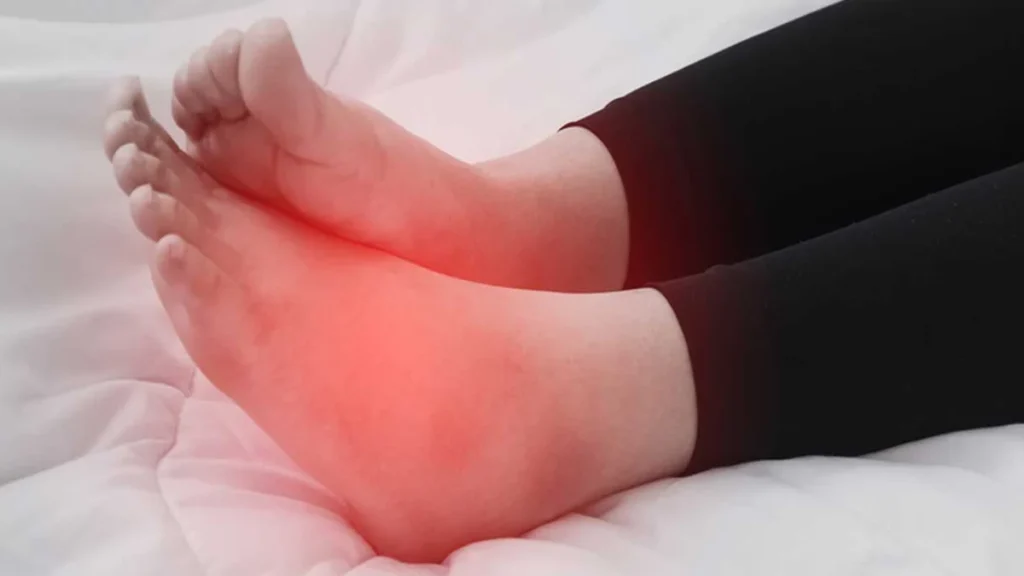
How to Reduce Swelling in Your Feet: 8 Proven Strategies
Now that we understand the causes, let’s explore practical and scientifically-based methods to combat swelling. These strategies can be easily incorporated into your daily routine and, when applied consistently, provide significant results.
1. Strategic Foot Elevation
Foot elevation is one of the simplest and most effective techniques for how to treat swollen feet. When you position your feet above heart level, gravity assists in returning accumulated fluids to central circulation, providing almost immediate relief.
Correct technique: Lie down comfortably and support your feet on pillows, elevating them 6 to 12 inches above heart level. Maintain this position for 15 to 20 minutes, repeating the procedure 3 to 4 times daily. The optimal times are upon waking, during lunch break, and before bedtime for maximum effectiveness.
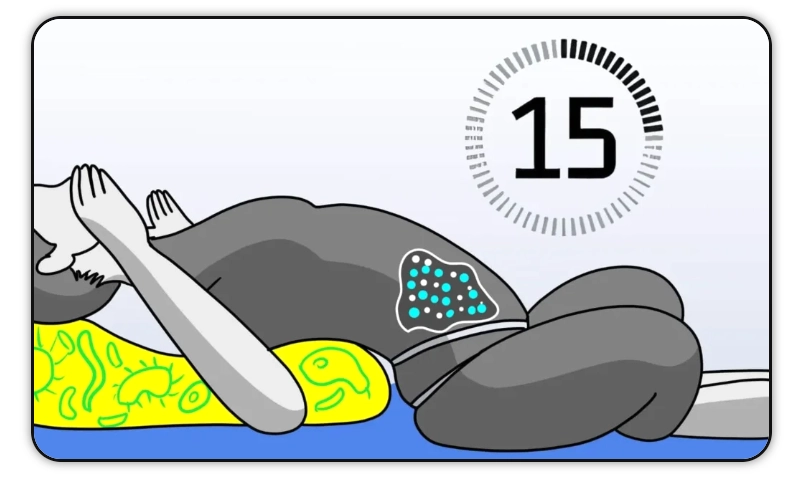
2. Specific Exercises for Circulatory Activation
Muscle movement acts as a natural pump, propelling blood and fluids back to the heart. These specific exercises can be performed even at home or work, making them perfect for busy schedules.
Recommended exercise routine:
- Ankle pumps: While seated, extend your legs and move your feet alternately up and down, as if pressing a pedal. Perform 20 repetitions, 3 times daily to activate the calf muscle pump.
- Ankle circles: Make circular movements with your feet, 10 repetitions in each direction, helping to mobilize accumulated fluids and improve joint mobility.
- Regular walking: Even 15 minutes of light walking can significantly activate circulation and reduce swelling by engaging the leg muscles.
- Calf raises: While standing, rise onto your toes and lower slowly, strengthening calf muscles that assist venous return and lymphatic drainage.
3. Intelligent Hydration Strategy
Although it may seem counterintuitive, staying adequately hydrated is essential for reducing fluid retention. When the body detects dehydration, it activates water conservation mechanisms, paradoxically intensifying swelling.
Hydration protocol: Consume 1.5 to 2.5 liters of water daily, distributed evenly throughout the day. Add natural ingredients like lemon, cucumber, ginger, or mint leaves to enhance diuretic and anti-inflammatory effects while making hydration more enjoyable.
4. Anti-inflammatory and Diuretic Nutrition
Nutrition plays a fundamental role in controlling swelling. Certain foods possess natural properties that help eliminate excess fluids and reduce inflammation that contributes to discomfort.
Foods that help reduce swelling:
- Potassium-rich options: Bananas, avocados, sweet potatoes, spinach, and watermelon help balance sodium levels in the body, promoting natural fluid regulation.
- Natural diuretics: Cucumber, celery, asparagus, parsley, and hibiscus teas have properties that gently stimulate fluid elimination without harsh side effects.
- Anti-inflammatory foods: Ginger, turmeric, omega-3 rich fish, and berries combat inflammation that can contribute to swelling and discomfort.
Foods to limit: Significantly reduce consumption of processed foods, deli meats, canned goods, and ready meals, which are typically high in sodium and can intensify fluid retention.
5. Therapeutic Lymphatic Massage
Lymphatic massage is a specific technique that stimulates the lymphatic system to drain excess fluids from tissues. When performed correctly, it can provide both immediate and lasting relief from swelling.
Self-massage technique: Use gentle, upward strokes, always moving toward the heart. Start from your toes, gradually moving up through ankles, calves, and thighs. Use coconut oil or moisturizing cream to facilitate smooth movements. Dedicate 10 to 15 minutes daily to this practice, preferably in the evening before sleep.
6. Contrast Temperature Therapy
Alternating between warm and cold temperatures can stimulate circulation and significantly reduce swelling. This technique, known as contrast hydrotherapy, has been used for centuries to treat circulatory problems and remains highly effective.
Contrast bath protocol: Prepare two basins, one with comfortably warm water and another with cool water. Immerse your feet in warm water for 3 minutes, then in cold water for 1 minute. Repeat this cycle 3 times, always ending with cold water. Add Epsom salts to the warm water to enhance relaxing and anti-inflammatory effects.
7. Proper Use of Compression Stockings
Graduated compression stockings exert controlled pressure on the legs, being tighter at the ankles and decreasing compression as they move up the leg. This graduated pressure assists venous return and prevents fluid accumulation effectively.
Usage guidelines: Consult a healthcare professional to determine the appropriate compression level for your needs. Wear the stockings during the day, especially if you spend long periods standing or sitting. Remove them for sleep, allowing your skin to breathe and recover overnight.
8. Natural Supplement Support
For more persistent cases or when conventional strategies don’t provide desired relief, support from specifically formulated natural products can make a significant difference. Many women find additional benefits by incorporating supplements that help regulate fluid balance and support healthy circulation.
Flush Plus represents an innovative approach for how can i reduce swollen ankles naturally and effectively. Specifically formulated for women facing fluid retention challenges during menopause, this product combines natural ingredients with proven diuretic and circulatory support properties. Discover how Flush Plus can complement your wellness routine and provide the comprehensive relief you deserve.
Optimized Daily Routine to Combat Swelling
Consistency is fundamental for achieving lasting results. Here’s a practical routine you can adapt to your specific needs and schedule, ensuring maximum effectiveness with minimal time investment.
Morning Routine (5-10 minutes)
- Upon waking, before getting out of bed, perform 10 ankle pumps and ankle circles to activate circulation
- Drink a glass of water with lemon to stimulate natural drainage and hydration
- If using compression stockings, put them on before standing to maximize their effectiveness
During the Day
- Every 2 hours, take a brief break to walk for 2-3 minutes, promoting blood flow
- Stay consistently hydrated by drinking water regularly throughout the day
- Avoid crossing your legs when seated, as this can restrict circulation
- Whenever possible, elevate your feet for a few minutes during breaks
Evening Routine (15-20 minutes)
- Enjoy a contrast bath or relaxing Epsom salt foot soak to reduce daily swelling
- Perform gentle upward lymphatic massage to encourage drainage
- Elevate your feet for 15-20 minutes while watching TV or reading
- If using natural supplements like Flush Plus, take as directed for optimal results
When to Seek Professional Medical Guidance
While foot swelling is often related to hormonal factors and lifestyle, it’s crucial to recognize when it may indicate more serious health conditions requiring immediate medical evaluation.
Seek immediate medical attention if swelling:
- Appears suddenly and is severe, especially if accompanied by other symptoms
- Affects only one foot or leg, which could indicate a blood clot
- Comes with chest pain, shortness of breath, or dizziness, suggesting possible heart issues
- Shows redness, warmth, severe pain, or skin lesions, indicating possible infection
- Is associated with unexplained weight gain or extreme fatigue
Schedule a consultation with your healthcare provider if:
- Swelling doesn’t improve with home measures after 7-10 days of consistent treatment
- You have a history of heart, kidney, or liver problems
- Swelling significantly interferes with your daily activities or quality of life
- You’re taking medications that may cause fluid retention as a side effect
A proper medical diagnosis can identify or rule out conditions such as heart failure, kidney problems, thyroid disorders, or circulatory complications that require specific medical treatment beyond home remedies.

Prevention and Maintaining Long-Term Results
After successfully reducing swelling, maintaining your results requires a consistent preventive approach. Prevention is always more effective and less taxing than treating acute episodes of severe swelling.
Essential Lifestyle Modifications
Small, permanent changes can have a significant impact on preventing recurrent swelling. Invest in comfortable shoes with adequate arch support, avoid overly tight clothing that can compromise circulation, and maintain a healthy weight to reduce pressure on your circulatory system and joints.
Sustainable Physical Activity
Establish a realistic exercise routine that includes enjoyable, low-impact activities like walking, swimming, water aerobics, or gentle yoga. These activities promote both blood and lymphatic circulation while strengthening the muscles that assist venous return without putting excessive strain on your joints.
Personal Monitoring and Adjustments
Keep a simple journal of factors that seem to worsen or improve your swelling. This might include specific foods consumed, activities performed, stress levels, weather changes, and hormonal fluctuations. This knowledge will enable you to make personalized adjustments to your care routine for optimal results.
For continuous support and optimization of your results, consider incorporating Flush Plus into your daily wellness routine. Many users report that consistent use of this natural supplement helps maintain healthy fluid balance and prevent more intense swelling episodes, especially during hormonal fluctuations.
Reclaim Your Confidence and Quality of Life
Swollen feet do not have to be a permanent limitation in your life. With the comprehensive strategies presented in this guide, you now have all the necessary tools to understand how to reduce swelling in your feet effectively and maintain lasting results.
Remember that every woman’s body is unique, and it may take some time to find the perfect combination of strategies that works best for your specific situation. Be patient and compassionate with yourself, celebrating every small improvement along the way. Consistency in applying these techniques is far more important than achieving perfection immediately.
Many women discover that combining thoughtful lifestyle changes with targeted natural support yields the most satisfying and lasting results. If you’re seeking a gentle, effective boost to complement your efforts, explore how Flush Plus can become your trusted ally on this journey toward renewed comfort, confidence, and well-being.
Your health and comfort represent valuable investments in your future happiness and quality of life. Don’t allow swelling to limit your favorite activities, affect your self-esteem, or diminish the joy you find in daily life. Start implementing these proven strategies today and rediscover the genuine pleasure of feeling light, comfortable, and completely confident with every step you take.
We’d love to hear from you! Leave a comment below sharing which strategy worked best for your situation, or pass this article along to other women who might benefit from this comprehensive information. Together, we can build a supportive community focused on achieving greater health, comfort, and confidence at every stage of life.

